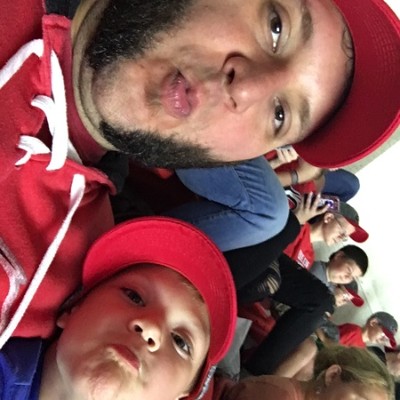
Bradley Metz
- Courses5
- Reviews6
- School: Texas A&M University
- Campus: College Station
- Department: Entomology
- Email address: Join to see
- Phone: Join to see
-
Location:
College Station, TX - Dates at Texas A&M University: November 2012 - August 2015
- Office Hours: Join to see
Biography
Texas A&M University College Station - Entomology
Resume
2004
I was a programmer and DJ for many years and subsequently joined the management team
eventually chairing the management team for a term before leaving due to family conflicts.
Keos Community Radio
Adobe Creative Suite
Public Speaking
Technical Writing
Team Coordination
Project Coordination
Microsoft Office
Distance Learning
Statistics
University Teaching
Apiculture
Research
Laboratory Skills
Bioassay
Brood pheromone effects on colony protein supplement consumption and growth in the honey bee (Hymenoptera: Apidae) in a subtropical winter climate
Brood pheromone effects on colony protein supplement consumption and growth in the honey bee (Hymenoptera: Apidae) in a subtropical winter climate
Division of labor is a striking feature observed in honey bees and many other social insects. Division of labor has been claimed to benefit fitness. In honey bees
the adult work force may be viewed as divided between non-foraging hive bees that rear brood and maintain the nest
and foragers that collect food outside the nest. Honey bee brood pheromone is a larval pheromone that serves as an excellent empirical tool to manipulate foraging behaviors and thus division of labor in the honey bee. Here we use two different doses of brood pheromone to alter the foraging stimulus environment
thus changing demographics of colony division of labor
to demonstrate how division of labor associated with brood rearing affects colony growth rate. We examine the effects of these different doses of brood pheromone on individual foraging ontogeny and specialization
colony level foraging behavior
and individual glandular protein synthesis. Low brood pheromone treatment colonies exhibited significantly higher foraging population
decreased age of first foraging and greater foraging effort
resulting in greater colony growth compared to other treatments. This study demonstrates how division of labor associated with brood rearing affects honey bee colony growth rate
a token of fitness.
Division of labor associated with brood rearing in the honey bee: how does it translate to colony fitness?
The 10 fatty acid ester components of brood pheromone were extracted from larvae of different populations of USA and South African honey bees and subjected to gas chromatography-mass spectrometry quantitative analysis. Extractable amounts of brood pheromone were not significantly different by larval population; however
differences in the proportions of components enabled us to classify larval population of 77% of samples correctly by discriminant analysis. Honeybee releaser and primer pheromone responses to USA
Africanized and–European pheromone blends were tested. Texas-Africanized and Georgia-European colonies responded with a significantly greater ratio of returning pollen foragers when treated with a blend from the same population than from a different population. There was a significant interaction of pheromone blend by adult population source among Georgia-European bees for modulation of sucrose response threshold
a primer response. Brood pheromone blend variation interacted with population for pollen foraging response of colonies
suggesting a self recognition cue for this pheromone releaser behavior. An interaction of pheromone blend and population for priming sucrose response thresholds among workers within the first week of adult life suggested a more complex interplay of genotype
ontogeny
and pheromone blend.
Variation in and responses to brood pheromone of the honey bee (Apis mellifera L.)
Brad
Duke University
Texas A&M University
Blinn College
NC State Department of Entomology and Plant Pathology
Supervisor: Dr. Roger Gold retired\nWrote and adapted syllabi to meet learning objectives. Designed activities and content for web delivery of course material. Limited web design and content databasing.
Texas A&M University
Duke University
Contract Instructor for Duke Honors Institute. Subject: Forensic Sciences.\nDesigned and wrote syllabus and curriculum to meet original learning goals. Coordinated instruction among multiple experts and professionals. Designed
produced
and taught novel laboratory activities. Wrote and delivered lecture material.
Instructor
Raleigh-Durham
North Carolina Area
Designed and taught original course in core area of expertise (Honey Bee Biology). Adapted course for online and traditional delivery. Wrote lectures and classroom activities.
Lecturer
Bryan/College Station
Texas Area
Texas A&M University
Taught traditional lecture/laboratory classes in core curriculum biology to majors students. Wrote lectures and wrote and delivered laboratory activities.
Instructor
Bryan/College Station
Texas Area
Blinn College
Designed and conducted grant-funded research into semiochemicals of the red imported fire ant. Managed collection trips and insect rearing. Trained graduate students and wrote grants.
Postdoctoral Researcher
Bryan/College Station
Texas Area
Texas A&M University
Raleigh-Durham
North Carolina Area
Postdoctoral Researcher
NC State Department of Entomology and Plant Pathology
2003
Doctor of Philosophy (PhD)
Graduate dissertation on honey bee semiochemicals.
Entomology
Animal Behavior Society
Brazos Educational Radio
Entomology Graduate Student Organization
Entomological Society of America
International Union for the Study of Social Insects
International Society of Chemical Ecologists.
Texas A&M University
2000
English
Bachelor's degree
Chemistry Minor
Biology
General
Psi Upsilon Fraternity
University of Illinois at Urbana-Champaign
186
This invention relates to a 10-component stabilized synthetic honey bee brood pheromone and methods of stabilizing said pheromone by adding one or more antioxidants
thereby enabling the production and sustained use of commercial products based on that pheromone. The 11-component stabilized pheromone composition formed by adding the antioxidant tertiary-butyl hydroquinone to a synthetic blend of ethyl linoleate
ethyl linolenate
ethyl oleate
ethyl palmitate
ethyl stearate
methyl linoleate
methyl linolenate
methyl oleate
methyl palmitate and methyl stearate can be used in generic or race-specific ratios to manipulate the behavior and improve the performance of worker honey bees
resulting in overall increased vigor of the hive.
us
Stabilized synthetic brood pheromone and race-specific ratios of components for manipulating the behavior and physiology of honey bees.
US2011/0021622 A1. Appl. No: 12/774




